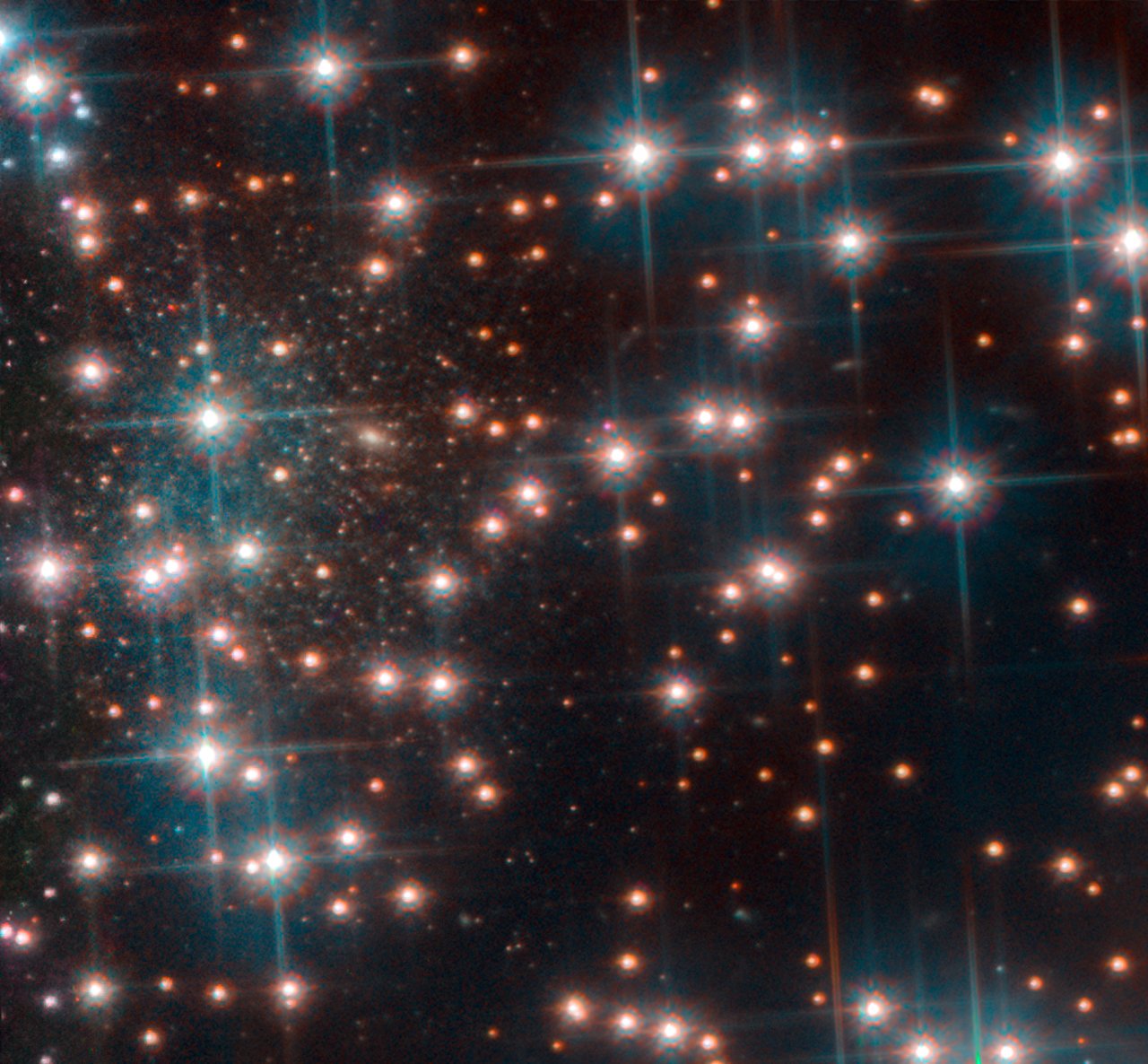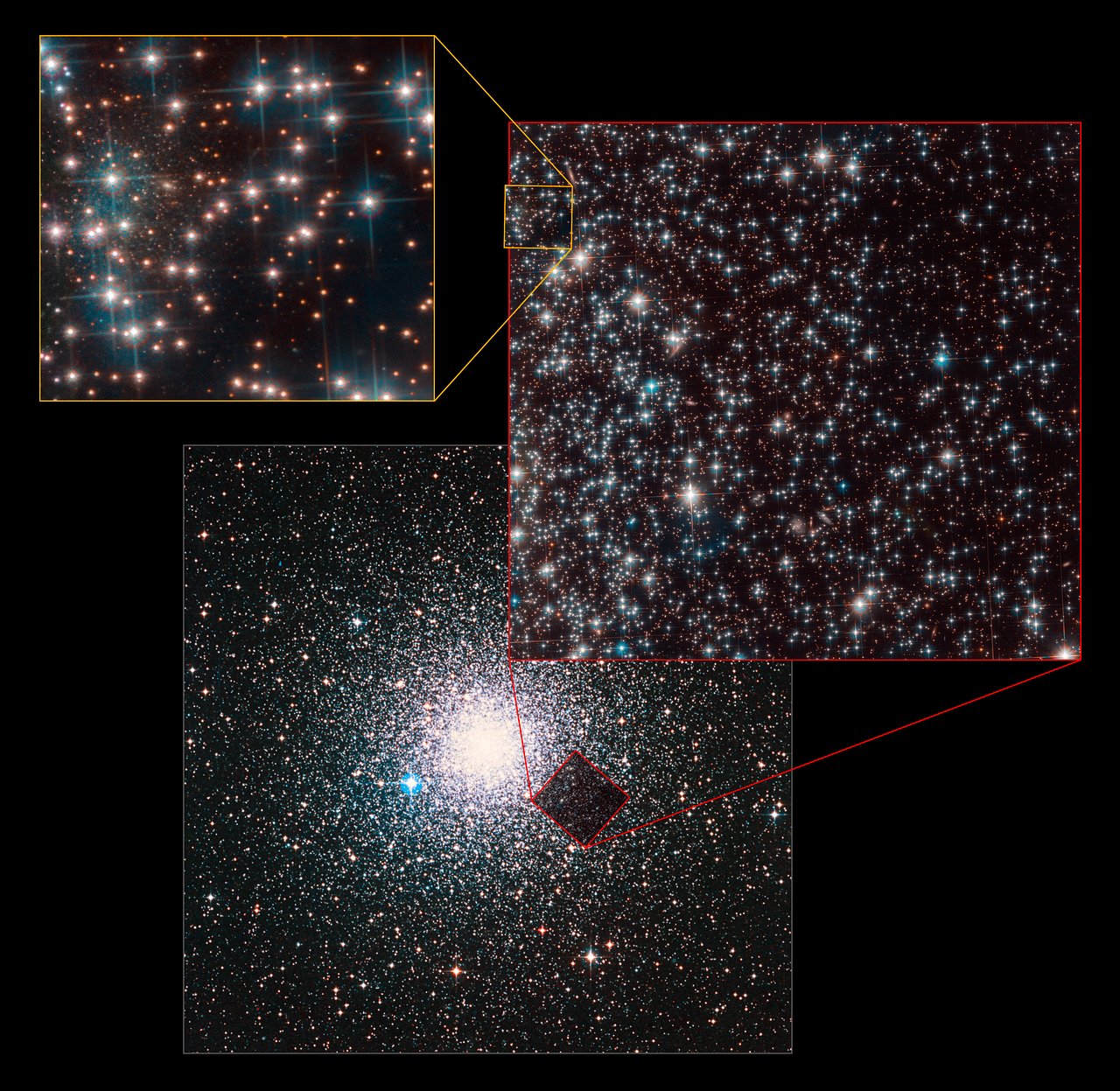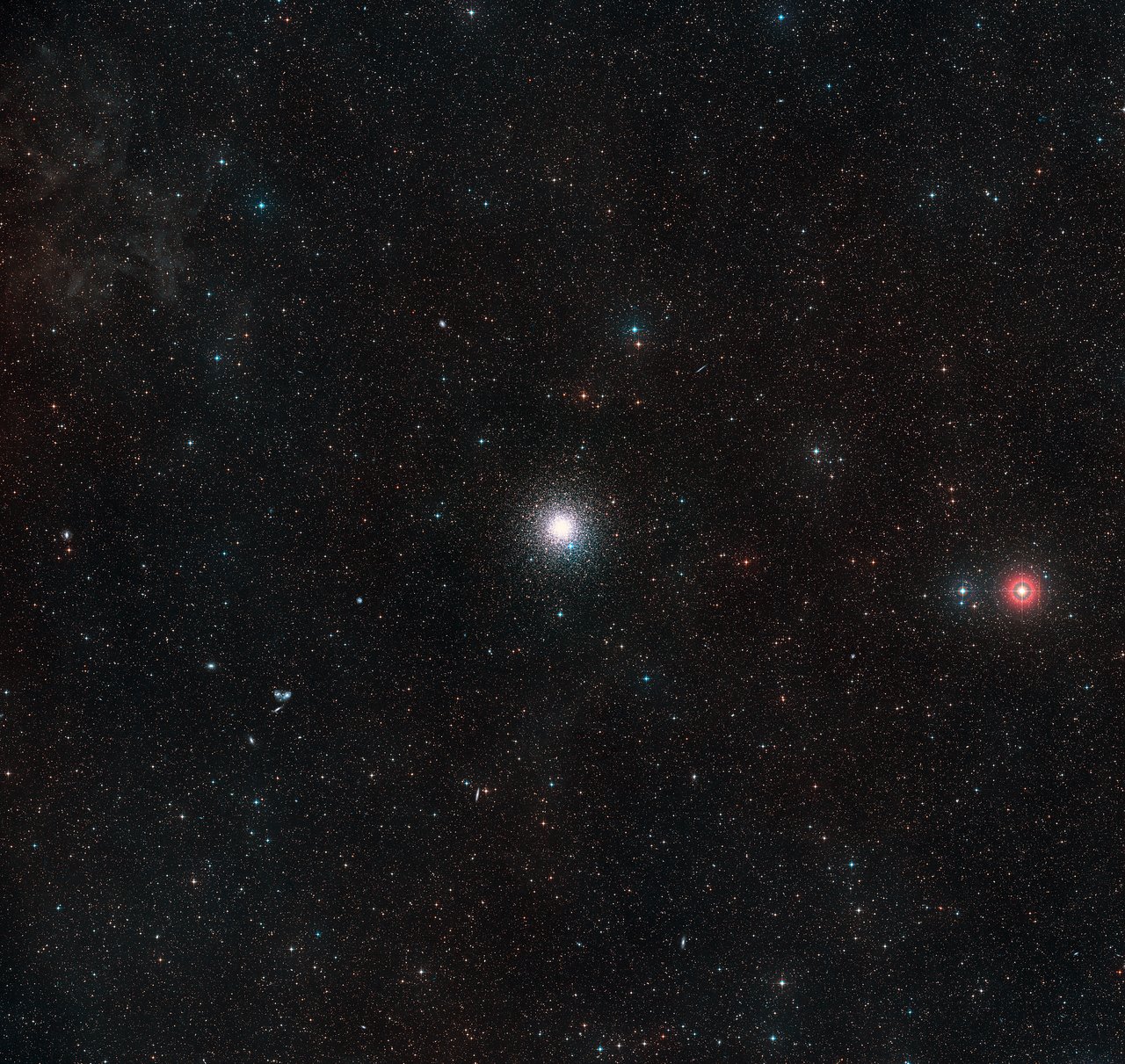Hubble Telescope Discovers 'Living Fossil' Galaxy in Our Milky Way's Backyard
Our Milky Way galaxy has another neighbor.
The Hubble Space Telescope has discovered a dwarf galaxy in our own cosmic backyard, a mere 30 million light-years from the Milky Way. (That may sound like a far piece, but remember: the observable universe is a whopping 93 billion light-years across.)
The find was fortuitous. An international team of astronomers was using Hubble's Advanced Camera for Surveys instrument to study white dwarfs — superdense stellar corpses — in the globular cluster NGC 6752, which is part of the Milky Way. [Gallery: 65 All-Time Great Galaxy Hits]
The Hubble images revealed an odd clump of stars. Analyses of the stars' brightnesses and temperatures indicated that they lay beyond NGC 6752 and were, in fact, part of a previously unknown galaxy.
The researchers determined that this galaxy — nicknamed Bedin 1, after discovery team leader L. R. Bedin of the INAF-Osservatorio Astronomico di Padova in Italy — is a "spheroidal dwarf" just 3,000 light-years wide. (For comparison, the Milky Way's famous spiral disk has a diameter of about 100,000 light-years.) Dwarf spheroidal galaxies are not uncommon; astronomers already knew of more than 20 that are satellites of the Milky Way. But Bedin 1 is special in several ways, according to the discovery team.
For example, the dwarf is about 2 million light-years away from the closest big galaxy that could feasibly be its host (which is called NCG 6744), the researchers said. Bedin 1 may therefore be the most isolated small dwarf galaxy known.
And then there's Bedin 1's age.
Breaking space news, the latest updates on rocket launches, skywatching events and more!
"From the properties of its stars, astronomers were able to infer that the galaxy is around 13 billion years old — nearly as old as the universe itself," Hubble team members wrote in a statement. "Because of its isolation — which resulted in hardly any interaction with other galaxies — and its age, Bedin 1 is the astronomical equivalent of a living fossil from the early universe."
The researchers published their findings online today (Jan. 31) in the journal Monthly Notices of the Royal Astronomical Society: Letters.
The Hubble Space Telescope, a joint project of NASA and the European Space Agency, launched to Earth orbit in April 1990 aboard the space shuttle Discovery. The scope's cosmic views were initially blurry — the result of a slight flaw in Hubble's primary mirror — but spacewalking astronauts fixed that problem in December 1993.
Astronauts maintained, repaired and upgraded Hubble on four additional servicing missions, the last of which occurred in May 2009.
Mike Wall's book about the search for alien life, "Out There" (Grand Central Publishing, 2018; illustrated by Karl Tate) is out now. Follow him on Twitter @michaeldwall. Follow us @Spacedotcom or Facebook. Originally published on Space.com.

Michael Wall is a Senior Space Writer with Space.com and joined the team in 2010. He primarily covers exoplanets, spaceflight and military space, but has been known to dabble in the space art beat. His book about the search for alien life, "Out There," was published on Nov. 13, 2018. Before becoming a science writer, Michael worked as a herpetologist and wildlife biologist. He has a Ph.D. in evolutionary biology from the University of Sydney, Australia, a bachelor's degree from the University of Arizona, and a graduate certificate in science writing from the University of California, Santa Cruz. To find out what his latest project is, you can follow Michael on Twitter.



